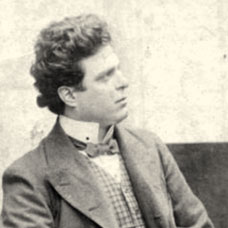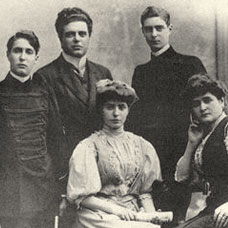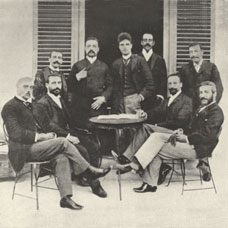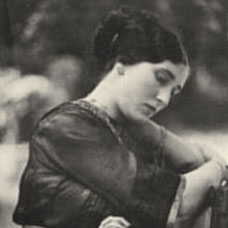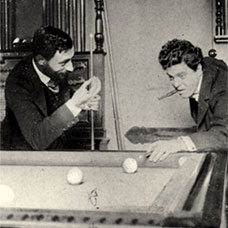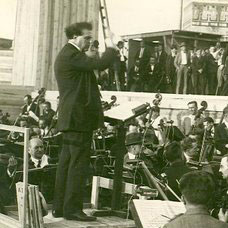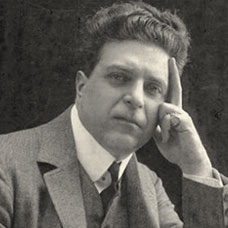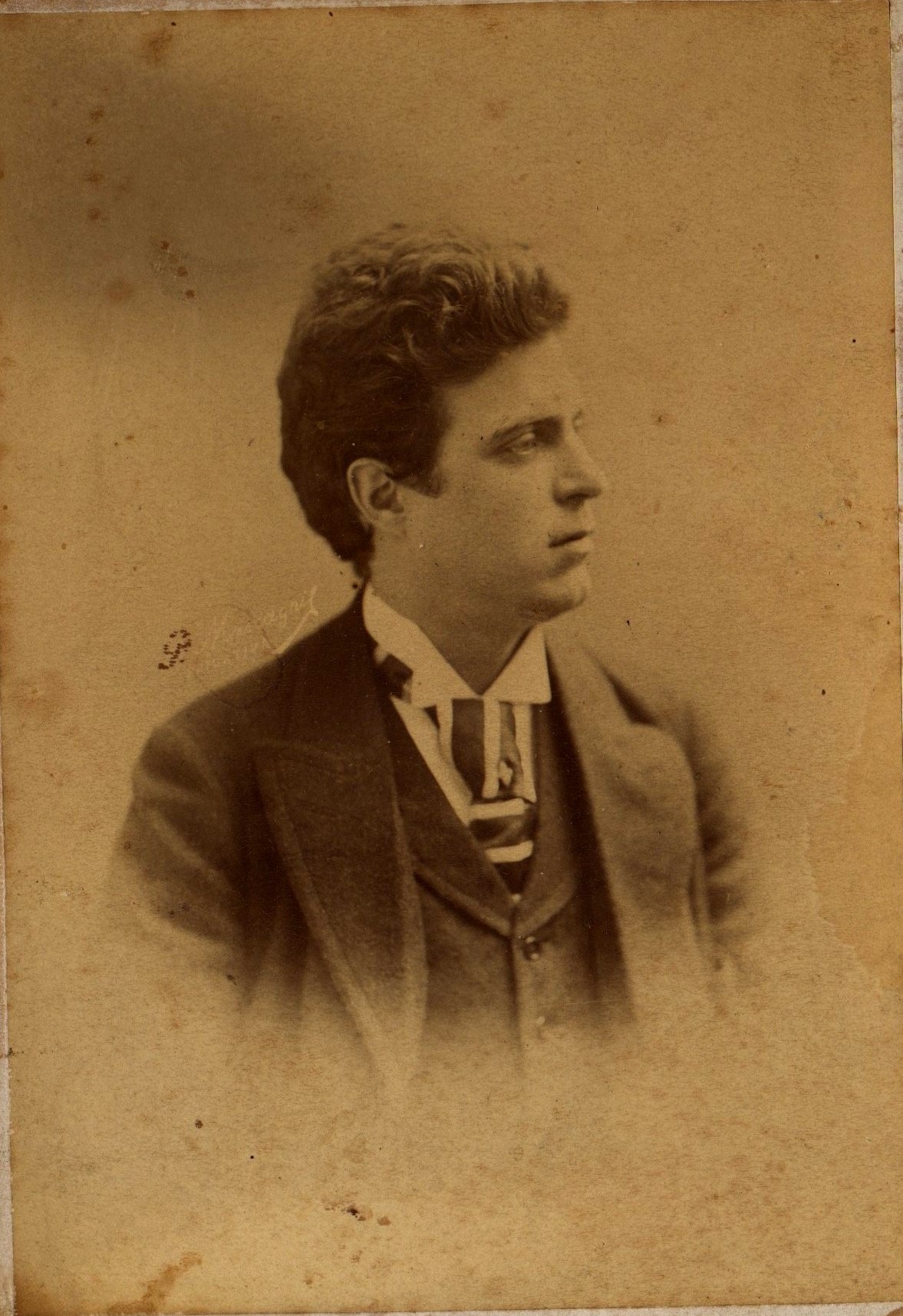 Mascagni made tours across Europe and over the Ocean:
Mascagni made tours across Europe and over the Ocean:
ITALY- ENGLAND - GERMANY - AUSTRIA- FRANCE- SPAIN- ROMANIA- RUSSIA-UNITED STATES OF AMERICA - SOUTH AMERICA...
In the great tours abroad, Mascagni offered different programs. He used to insert the great Italian musicians of the past from Rossini to Verdi. He frequently recalled titles of his colleagues at the so-called Young School, from Puccini to Jordan to Leoncavallo.
Immediately after the first representation of Cavalleria Rusticana, it was called all over Europe.
Already in May 1892, Emperor Franz Joseph inaugurated a great event, in Wien, at the Prater, conceived by the princess Paoline of Metternich: the International Exhibition of Music and Theater, where several nations presented their most significant creations. Sonzogno brought his House Maestro. (From "Pietro Mascagni" by Cesare Orselli- 2011). Cilea then confirmed that Mascagni had had a great Viennese demonstrations of sympathy and admiration. The biggest newspaper came out with an article "Vienna has been Mascagnized!"
In 1893 he went on tour first in Berlin, then in London, where he also met Francesco Paolo Tosti, who from 1880 was a Singing Master at the English Court. He was presented to Queen Victoria, who invited him to conduct at Windsor Castle ("An adventurous of the opera" by Roberto Iovino).
Mascagni himself told about this extraordinary meeting: “I was invited by the Queen Victoria to Windsor Castle, where I slept, ate, and I was treated with great consideration. I went there to conduct Cavalleria and L’ Amico Fritz, right in the Queen's house, with all the performers of Covent Garden, the orchestra and choirs. I was very excited by this fact, even if I was getting used to long and extraordinary journeys. In one of those nights, just in London, I even dined with Rothschild: a lunch as never seen! At the time, Alfred Rothschild was the richest man in Europe, so that even the cutlery was of solid gold, all the dishes silver and on the table there were the rarest flowers from around the world. At the end of the dinner, Rothschild rose to make a toast in my honor and I remember he called me: "the beacon for the music of the future".
But back to the Queen. We arrived at Windsor Castle on July 15 and Tosti introduced me to Her Majesty. The Queen gave me her hand and said, in French, she was very glad to meet me and she had long wanted to know me personally.” I fell in love with your music and especially Cavalleria Rusticana. When you write other works always try to think of your Cavalleria”. I answered in French, but I was so moved that I do not remember what I said.
In the evening at nine o'clock there was the representation of the second act of L’Amico Fritz and Cavalleria Rusticana.
And there happened to me one of the most curious episodes of my life. The evening of that important execution I went to the orchestra to conduct. After a while a man came and told me: "The gloves: you must wear gloves. In front of the Queen you cannot stay without gloves." “But I've never worn gloves, even in Russia, where it was very cold. "" It does not matter: you will find some here. "And a Stage Director gave me a couple of huge gloves.
Not only that: I had to conduct with my back to the orchestra. I had to turn my face to the Queen, who was down the hall. But it was necessary to do it. The Prelude of the Cavalleria I conducted that way. But after the Prelude a man in High uniform approached me, speaking English very quickly. Of course I did not understand anything; then I asked the concertmaster, who spoke Italian: But what did this gentleman say?
The master told me: “He said that Her Majesty allows you to conduct without gloves, to face the orchestra and to concentrate on your opera”
“So then- I said- what an intelligent woman is the Queen!” 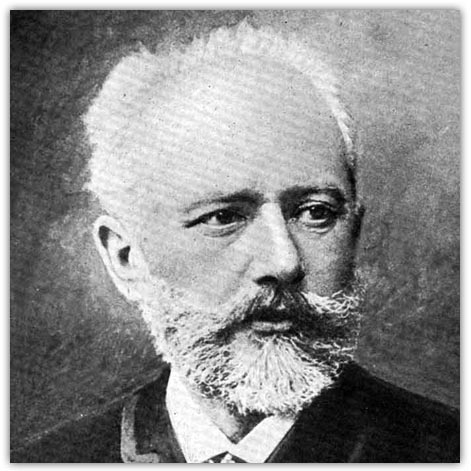
In 1898 Mascagni held six concerts at Scala, among others, for the first time in Italy the Cajkovski Symphony “Pathetic” :
"Maestro Mascagni – said the newspaper "Corriere della Sera" in the number 13/14 April 1898 – undoubtedly holds the rarest qualities of the interpreter and the director, and every new concert is the the proof of it ...".
Equally praiseworthy is the article published in the "Gazzetta Musicale di Milano" in which a curious annotation is read about another piece in the program, the “Sacred Agape" from Wagner Parsifal:" The inner chorus is ideally placed high and in many points produced a moving effect. "
In 1901, for the death of Verdi, he was called to Vienna to direct the Requiem Mass, and Mahler's insistence on Cavalry at the Imperial Theater. In 1902 he performed Don Giovanni of Mozart in Madrid for the ascension to the throne of Alfonso XIII.
In March and April 1902, in Prague, Bucharest, Budapest, Vienna, Warsaw and Berlin, he had an important tour: "From Warsaw – the" Music Chronicle "of Pesaro (nn 11-12 of 1902) telegraphed to Newspaper of Italy: “ Last night there was the last of the three major instrumental and vocal concerts under the direction of Pietro Mascagni”
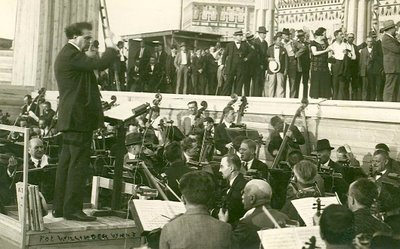 "Success was unbelievable. Immense public. Several thousand people were pushed back. The closest gentlemen embraced Mascagni: the ladies threw flowers, gloves, handkerchiefs: they all looked crazy. "
"Success was unbelievable. Immense public. Several thousand people were pushed back. The closest gentlemen embraced Mascagni: the ladies threw flowers, gloves, handkerchiefs: they all looked crazy. "
In 1902, he signed a contract with Aubrey Mittenthal for a US tour. As Mallach writes, "in 1902, Opera in the USA was still an imported art made by Europeans or by American Americans who welcomed stars like Francesco Tamagno or Nellie Melba ... for Mascagni it was different ... the audience was anxious to hear Mascagni directing Cavalleria or IRIS or William Ratcliff, while the world news stories reported his eccentric clothing and his behavior as fascinating and exotic! "
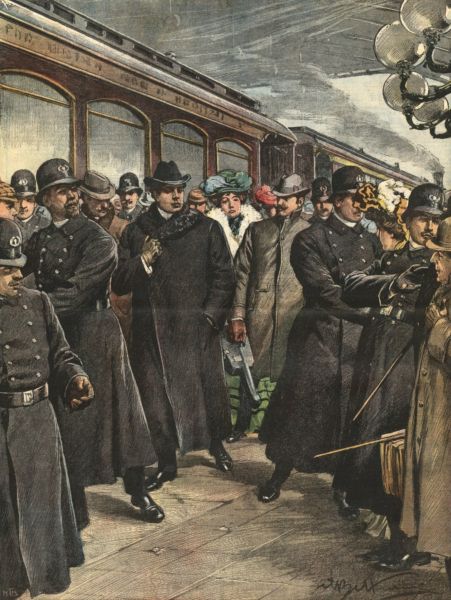 When he arrived with his wife in New York, thousands of people from the Italian community in New York travelled from Broadway with bands to Hotel Savoy. He had only two days of rehearsal before opening the Metropolitan Opera House with Cavalleria Rusticana and Zanetto. The audience was thrilled and Mascagni and the singers were often interrupted by applause. The Musical Courier and the New York Times praised the work, even though the orchestra had brought together Italian and American elements, due to a misunderstanding of trade unions.
When he arrived with his wife in New York, thousands of people from the Italian community in New York travelled from Broadway with bands to Hotel Savoy. He had only two days of rehearsal before opening the Metropolitan Opera House with Cavalleria Rusticana and Zanetto. The audience was thrilled and Mascagni and the singers were often interrupted by applause. The Musical Courier and the New York Times praised the work, even though the orchestra had brought together Italian and American elements, due to a misunderstanding of trade unions.
Three days later, the real American debut was the representation of Iris in Philadelphia.
IRIS was a challenging job. It was the product of the decadent winds that blow from Paris to Vienna, the Japanese atmosphere recalled the exotic taste of that period, a taste that will give way to the success, many years after, of Puccini’s Madame Butterfly.
With the Prelude “Hymn of the Sun”, the audience "resounded its approval." Once again the Musical Courier was enthusiastic, considered Mascagni "an unconscious metaphysician, a Master, a man of deep sophistication"
"For the Italian Immigrant Community, Mascagni's presence was a triumph, an opportunity of glory in the artistic tradition of their country." As Mallach remembers in his book "When Mascagni arrived in Philadelphia, his train delayed long after midnight: 5,000 Italian Americans, music bands, and everyone, patiently waited for him at Broad Street Station. With Mascagni's astonishment, almost all the Italian communities in the eastern part of the United States had their Mascagni Society or Band ".
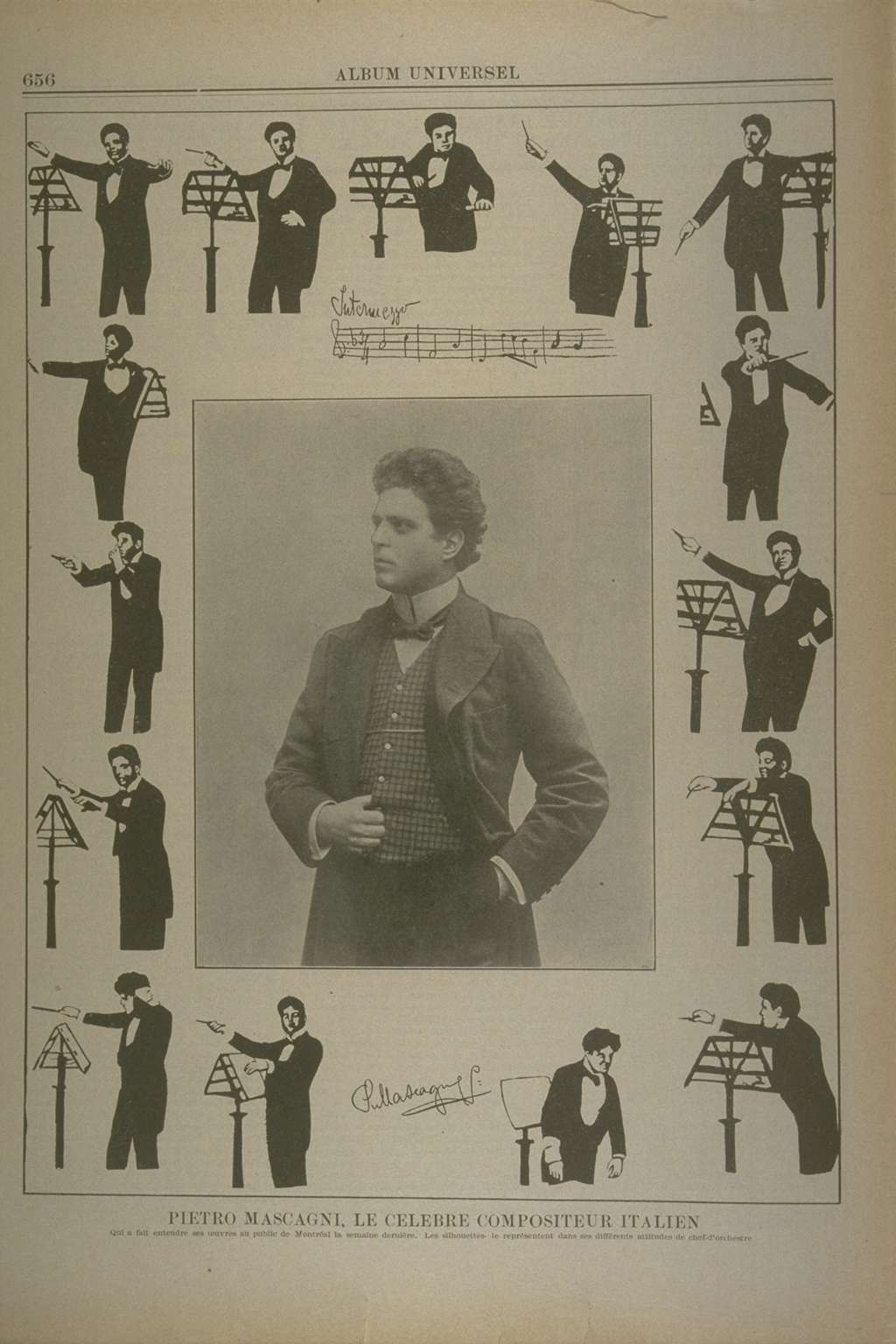 The same thing happened in Boston. The Boston Herald called Cavalleria "a revelation" and "Zanetto" a small splendid masterpiece. But Mittenthal decided to leave the business; he accused the composer of having to pay him money: in fact both Mascagni and the artists had not yet been paid. Only at the end of November, Mascagni succeeded in signing a new contract with Richard Heard and was able to continue his tour.
The same thing happened in Boston. The Boston Herald called Cavalleria "a revelation" and "Zanetto" a small splendid masterpiece. But Mittenthal decided to leave the business; he accused the composer of having to pay him money: in fact both Mascagni and the artists had not yet been paid. Only at the end of November, Mascagni succeeded in signing a new contract with Richard Heard and was able to continue his tour.
He had a series of concerts in January with the Theodore Thomas Orchestra (which later became the Chicago Symphony Orchestra), which was a great success, so much to rethink the spirit of the composer. At the end of January 1903, he and Lina got on the train to San Francisco, where he remained for about two months, celebrated by the Italian community.
The local press immediately showed an unexpected enthusiasm for the visit of the composer. His habits, his colorful personality, the fact that he smoked Tuscan cigars was always described, he was always elegant and smiling.
The Prelude of Iris gave a great acclaim in criticism, but Cavalleria Intermezzo conquered the public. The Examiner reported that about 500 women in San Francisco had been waiting for Mascagni to come out of Jones Street (lateral exit of the theater), controlled by the police, to be able only to have a glance to his figure.
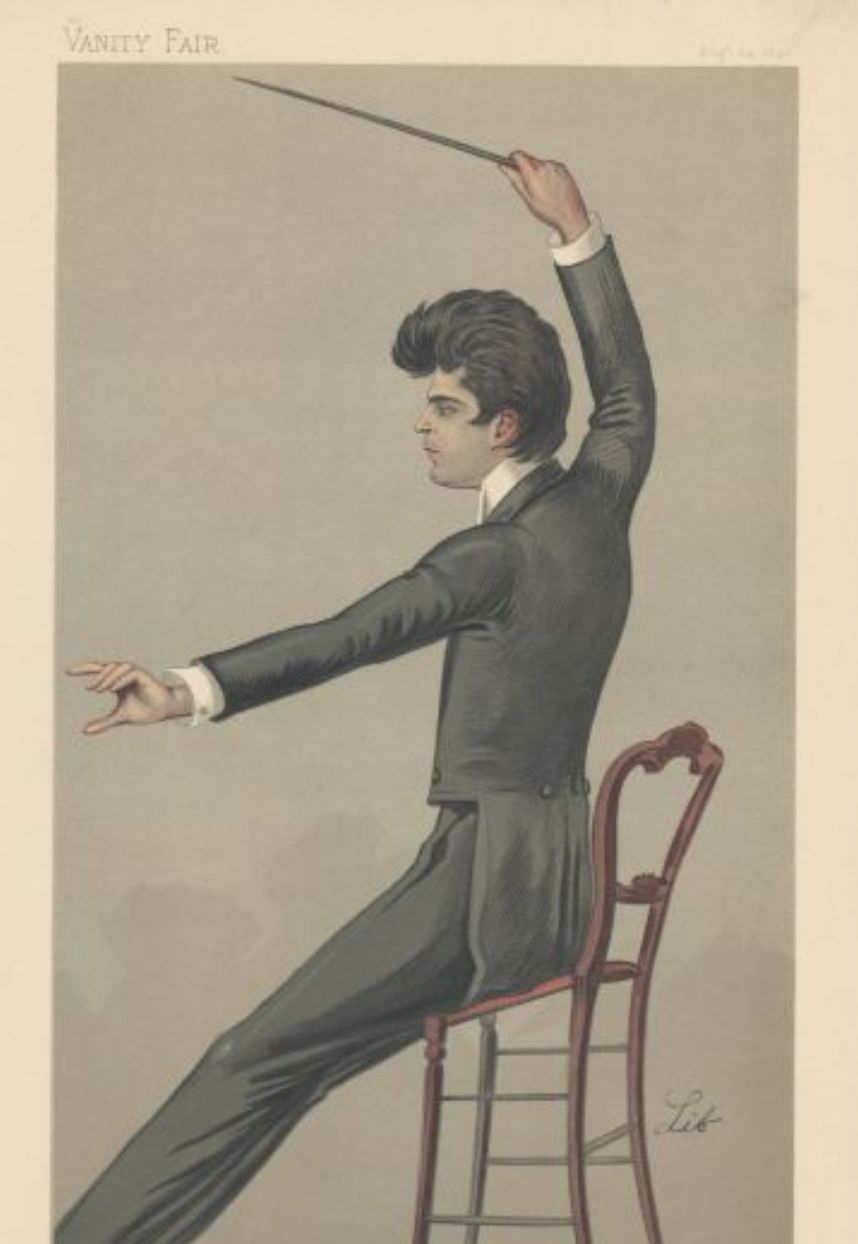 This warm welcome did not leave cold the composer, who composed a small fragment on the piano entitled A thought to San Francisco, with which Mascagni wanted to thank the people of San Francisco for their continued manifestation of sympathy and affection.
This warm welcome did not leave cold the composer, who composed a small fragment on the piano entitled A thought to San Francisco, with which Mascagni wanted to thank the people of San Francisco for their continued manifestation of sympathy and affection.
The final concert took place a few days later, with the purpose of raising funds for the construction of a monument to Verdi. Just after a week, Mascagni and his wife embarked on Savoy to New York to return to Italy.
BUENOS AIRES - MAY 8, 1911
"My anniversary, my arrival here was a solemn feast, never seen, 2000 people waiting for me on the quay, and it was a magnificent spectacle seen from the ship, many bands playing my music, the town band played very well The Inno del Sole.
When I came down to the ground, the enthusiasm of all that crowd became fierce and I was afraid to be choked: I was beaten here and there, beaten on all sides so much that I had pain in my arms and chest for three days. "
List of lyric works performed by Mascagni, sorted alphabetically by composer.
Biography - His Family - His Friends - His Women - His Passions - On the podium - Portrait of an artist



